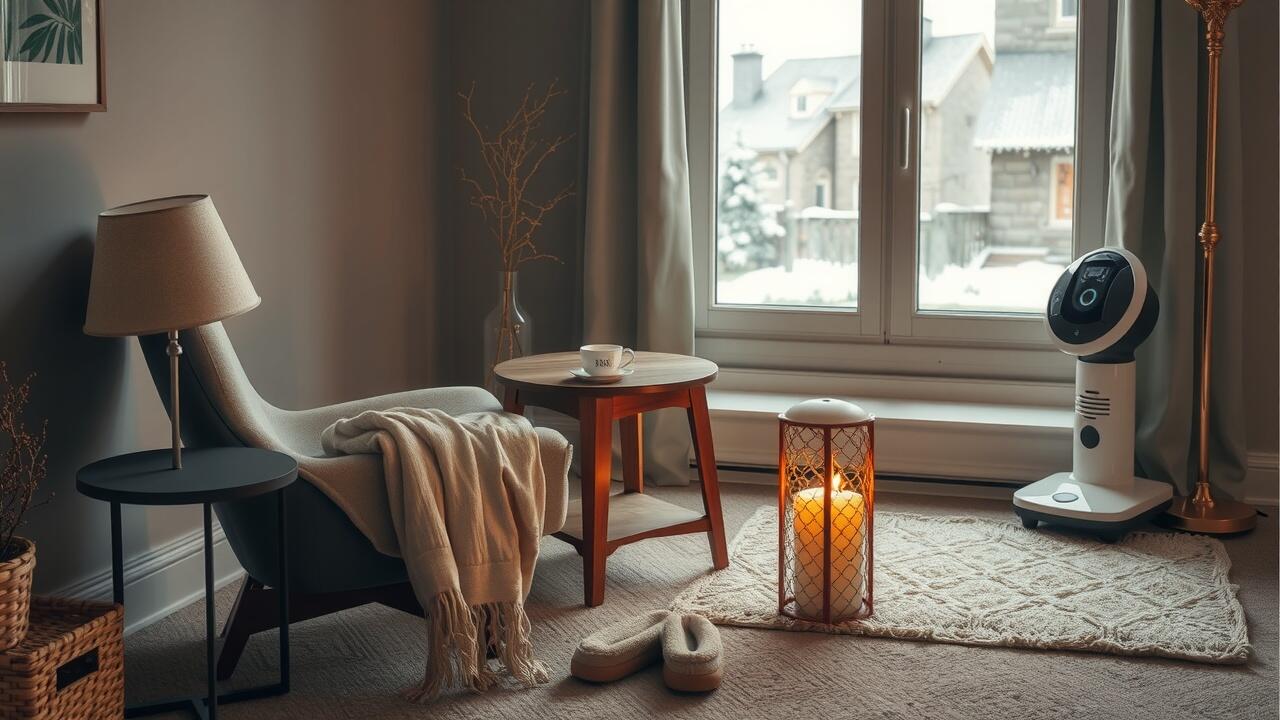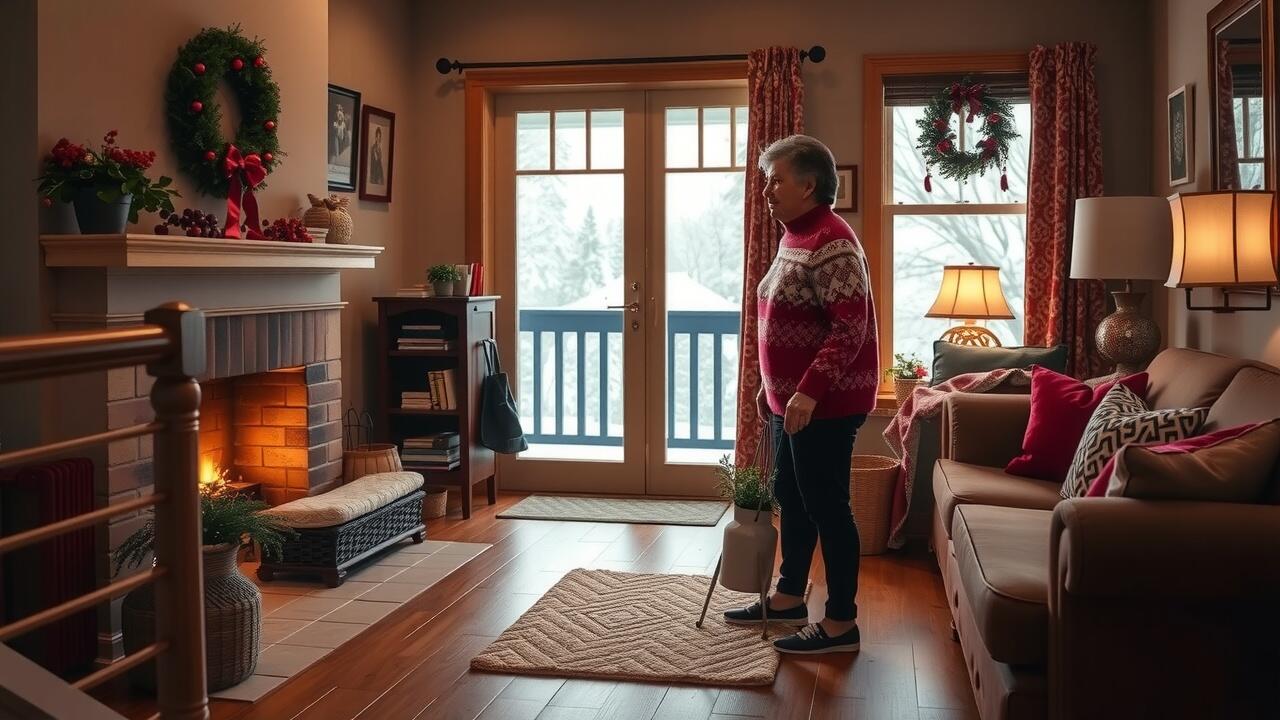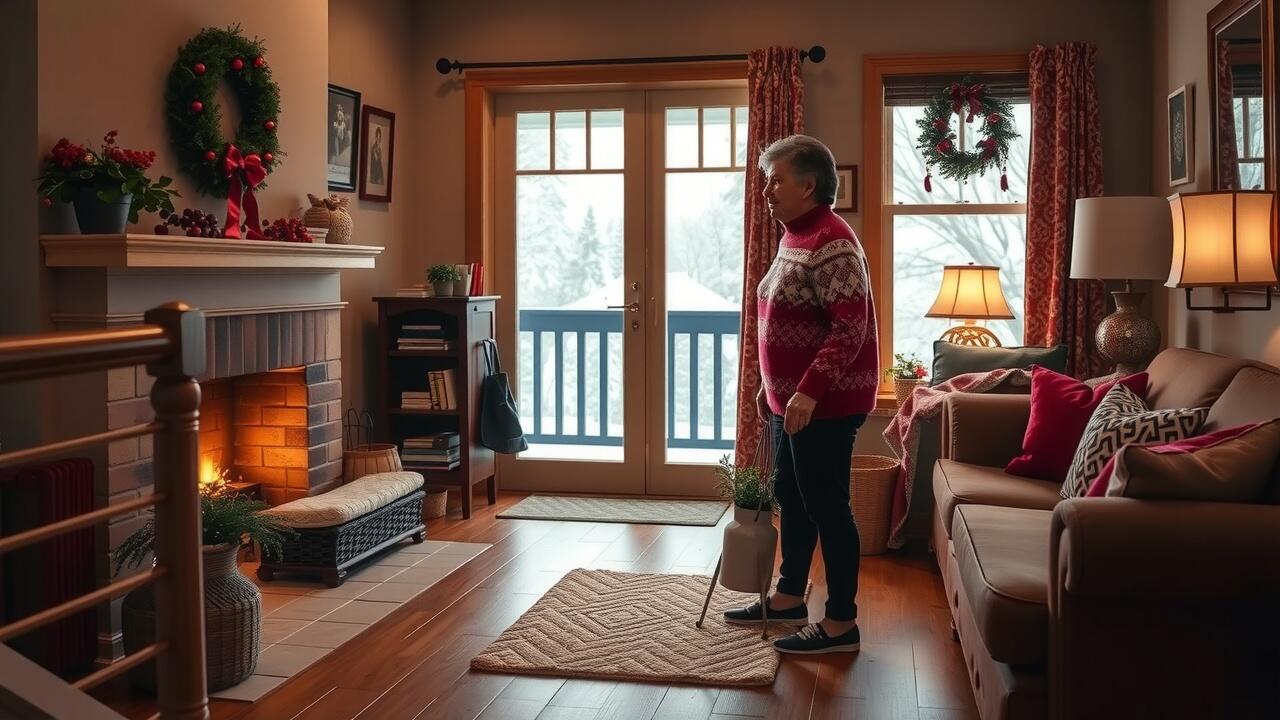Key Takeaways
- Importance of winter safety for elderly individuals is crucial for their well-being.
- Essential components for a winter safety list are necessary to ensure preparedness.
- Preparing outdoor areas is vital to prevent hazards during the winter season.
- Indoor safety precautions are important to maintain a secure living environment.
- Health factors during cold months should be taken into account for seniors’ safety.
Senior Living Winter Safety Checklist | Importance of Winter Safety for Seniors
The winter season presents unique challenges for senior citizens, making a senior living winter safety checklist essential for maintaining their safety and well-being. Cold weather can exacerbate health issues and increase the risk of accidents related to snow and ice, which are common safety hazards during this time. Older adults are particularly susceptible to cold stress, making it crucial to prepare ahead of time. A thorough checklist not only promotes personal safety but also aligns with workplace safety standards for caregivers and service providers. By addressing potential risks and outlining necessary precautions, the senior living winter safety checklist serves as a valuable tool for ensuring a safe environment throughout the winter months.

senior living winter safety checklist | Understanding the Risks
Winter presents unique challenges and hazards, particularly for seniors. A thorough senior living winter safety checklist can help identify common winter safety concerns such as slippery walkways, inadequate heating, and exposure to extreme cold. During the holiday season, festivities take place alongside these potential hazards. Understanding these risks allows caregivers and seniors to implement proactive measures for overall safety.
Effective winter preparation is essential to minimize risks associated with cold weather. A well-crafted winter safety checklist ensures that senior safety remains a priority. It serves as a valuable tool for addressing critical issues, such as maintaining home heating, proper clothing, and safe outdoor environments. By recognizing and mitigating these hazards, seniors can enjoy the holiday season with confidence and security, knowing that their well-being has been prioritized through a comprehensive approach to winter safety.
Benefits of a Safety Checklist
A comprehensive senior living winter safety checklist is essential for minimizing winter risks associated with cold weather. This checklist helps ensure that all necessary winter home maintenance tasks are completed, creating a safe environment for seniors. By following winter safety protocols, senior living staff can enhance the overall safety and comfort of residents. Implementing these winter safety tips not only protects individuals but also fosters a sense of security within the community.
Utilizing a safety checklist in senior living communities provides a structured approach to addressing various winter challenges. This systematic method assists in maintaining safe winter conditions, from properly insulating homes to preparing for emergencies. By emphasizing winter workplace safety among staff, care providers can ensure that all residents are monitored and supported throughout the winter months. A thorough senior living winter safety checklist equips everyone to face the challenges of winter confidently.
Essential Items for a Winter Safety Checklist
Creating a senior living winter safety checklist is vital for managing the cold-weather safety risks that seniors face. Independent living winter environments can introduce various winter weather risks, making it essential to ensure that all safety measures are in place. A comprehensive seasonal home checklist includes evaluating home heating and insulation to mitigate winter danger. Ensuring adequate protection against the elements not only enhances comfort but also maintains the well-being of residents in a senior living community. The senior living industry emphasizes that a proactive approach can significantly reduce the likelihood of accidents. By adhering to a senior living winter safety checklist, caregivers and residents alike can navigate the challenges of winter more confidently.
Home Heating and Insulation
Sufficient home heating and proper insulation are critical elements in any senior living winter safety checklist. Many seniors may face challenges during winter activities due to the harsh winter cold, making effective heating solutions essential. Senior living facilities should ensure that heating systems are functioning properly and that windows and doors are well-insulated to prevent drafts. Creating a warm environment not only enhances comfort but also helps prevent winter emergencies, such as hypothermia or frostbite.
Investing in adequate heating sources is a common feature in senior living communities that prioritize the well-being of their residents. Senior care plans often include measures to address heating needs and minimize risks associated with cold weather. Engaging in regular maintenance of heating systems can help seniors enjoy their winter activities safely. A well-maintained environment supports overall health and enhances the quality of life during the colder months.
- Regularly check and replace furnace filters to ensure optimal heating efficiency.
- Seal any gaps around windows and doors to improve insulation and reduce energy costs.
- Install programmable thermostats to maintain comfortable temperatures efficiently.
- Use space heaters safely and ensure they meet safety standards.
- Encourage residents to dress in layers to retain body heat when indoors.
- Schedule annual inspections of heating systems to catch any potential issues early.
- Educate residents about recognizing signs of hypothermia and frostbite, and provide emergency contacts.
Winter Gear Essentials
Winter gear is crucial for seniors to maintain their health and safety during the colder months. A well-rounded senior living winter safety checklist should include essentials such as a durable winter coat, insulated gloves, and warm hats to combat the chill. Dressing in layers can enhance winter readiness and prevent exposure to extreme cold, which can lead to winter illnesses. Seniors should focus on preparing for winter by ensuring they have access to appropriate attire for those chilly winter days.
Efficient winter preparations extend beyond clothing. Footwear should prioritize slip resistance, providing stability on icy surfaces. Senior living assists in maintaining a safe environment through reminders about proper winter gear. A good winter survival guide can help seniors navigate outdoor conditions while minimizing risks associated with falls. Emphasizing winter preparedness not only enhances comfort but also promotes overall wellness in a senior community.
Preparing Outside Spaces
As winter presents unique challenges for seniors, addressing outdoor safety is crucial in the senior living winter safety checklist. During the icy winter months, the potential for slips and falls increases significantly, making safe walkways and entrances essential. Seniors should focus on maintaining clear paths for winter walks and ensuring that any snow and ice are promptly removed. This proactive approach helps reduce cold weather risks and allows for safer navigation during the winter months. Ensuring proper preparation for outdoor spaces not only enhances safety but also encourages seniors to remain active and engaged despite the chill. Embracing winter essentials, such as sturdy footwear and appropriate outdoor gear, plays a vital role in overcoming winter-related challenges.

Snow and Ice Removal Tips
Proper snow and ice removal is crucial for ensuring senior well-being during the winter season. Seniors may face numerous snow hazards, making it essential to incorporate appropriate safety measures into a senior living winter safety checklist. Regularly clearing walkways and driveways can significantly reduce the risk of falls and injuries, which is especially important for senior drivers who may need to navigate these areas. Establishing a plan for snow and ice removal helps combat winter isolation by making it easier for seniors to access essential services and socialize.
Implementing effective snow and ice removal strategies should include having the right tools and resources readily available. Seniors or their caregivers should consider enlisting help for heavy lifting or using salt and sand to improve traction on icy surfaces. Following proper safety precautions while performing these tasks is vital to maintain safe living practices and protect against potential injuries. The harsh realities of extreme cold demand proactive measures, and an organized senior living winter safety checklist can support these efforts, ensuring both safety and comfort during the winter months.
Safe Walkways and Entrances
Maintaining secure living spaces is crucial during the cold season, especially for seniors. The senior living winter safety checklist should prioritize the clearance of walkways and entrances. Regularly monitor weather conditions and promptly remove snow and ice to prevent slips and falls. This extra safety precaution not only enhances mobility but also reduces the risk of cold-related health issues that can arise from hazardous conditions outside.
Creating safe access points for seniors allows them to enjoy winter-themed events without worry. Ensuring that walkways are well-lit and free from obstacles can make a significant difference. A thorough inspection of railings and non-slip mats can further aid in providing security during the cold. By taking these measures, the senior living winter safety checklist becomes an essential tool in ensuring a safe and enjoyable winter experience.
Indoor Safety Measures
Ensuring safety indoors during icy weather is crucial for residents in a senior continuum community. A comprehensive senior living winter safety checklist should include effective safety measures aimed at preventing slips and falls. Residents must have access to proper health monitoring as cold weather can exacerbate existing health issues. Implementing the right precautions, such as keeping hallways clear and securing rugs, significantly contributes to the well-being of each senior group. Customizing the senior living winter safety checklist to address individual resident’s care needs enhances safety and comfort during the winter months.
Preventing Slips and Falls
A senior living winter safety checklist is crucial during the coldest months, as icy sidewalks and occasional icy roads can pose serious risks. To enhance safety, seniors should ensure they wear non-slip footwear and utilize handrails when navigating steps or ramps. These simple safety tips can significantly reduce the likelihood of slips and falls, allowing seniors to maintain their independence while enjoying a maintenance-free lifestyle.
For those who may find it challenging to navigate icy conditions, senior transportation services can be a valuable resource. These services not only provide safe travel options but also alleviate the stress of winter driving. The cold hits hard during this time of year, making it essential for seniors to remain vigilant and proactive in their approach to safety as outlined in the senior living winter safety checklist.
- Regularly check for icy patches and clear walkways promptly
- Keep floors dry and free of clutter indoors
- Use assistive devices, such as canes or walkers, when necessary
- Install adequate lighting in entrances and hallways
- Stay active and strengthen muscles to enhance balance
- Consider winter-specific home modifications, like grip strips or mats
- Schedule regular safety assessments of living spaces
Emergency Preparedness
December brings cooler temperatures, creating an urgent need for a senior living winter safety checklist. Many seniors depend on maintenance professionals to ensure their living spaces are prepared for winter. This preparation includes inspecting heating systems, checking insulation, and making sure that pathways are clear. Basic safety precautions, such as having warm boots readily available and ensuring that emergency numbers are easily accessible, can make a significant difference in a senior’s winter experience.
Taking essential precautions against winter hazards is crucial for seniors. They should have an emergency plan in place that includes communication with family members and neighbors. Keeping a stocked supply of food, medication, and warmth can mitigate risks during severe weather. By following these necessary precautions, seniors can enjoy the season with greater peace of mind, knowing they are prepared for any unexpected situations.
Health Considerations in Cold Weather
Cold weather can pose serious health risks for seniors, making it essential to adhere to a senior living winter safety checklist. Personal care becomes particularly important as temperatures drop. It’s crucial to keep homes warm, ensuring that heating systems are functional and providing a comfortable environment. Seniors living in a care retirement community should regularly check their surroundings, especially for icy walkways that require salting to prevent slips. Wearing winter shoes with good traction can significantly reduce the chances of falls. Monitoring for symptoms of cold-related illnesses is vital, as early detection can lead to better outcomes. A warm home coupled with these precautions can help maintain health and safety during winter months.
Recognizing Cold Weather Illnesses
Cold weather can present serious health risks for seniors. It’s essential for all residents to understand the importance of monitoring for cold weather illnesses. These can range from hypothermia to frostbite, particularly affecting individuals with reduced mobility or health issues. A senior living winter safety checklist should include guidance on appropriate indoor temperatures in resident rooms. Adjustments in care plans may be necessary to ensure that all adults are kept warm and safe throughout the winter months.
Recognizing the early signs of cold-related health issues is vital in a senior living environment. Symptoms such as shivering, confusion, and fatigue may indicate hypothermia. Residents engaged in independent living should be encouraged to check on one another frequently. Care staff need to be vigilant and proactive in addressing any potential health concerns. The senior living winter safety checklist serves as a resource to help staff and residents alike understand the risks posed by colder temperatures.
| Cold Weather Illness | Symptoms | Preventive Measures |
|---|---|---|
| Hypothermia | Shivering, confusion, fatigue | Maintain indoor temperatures above 65°F, wear warm clothing |
| Frostbite | Cold skin, numbness, discoloration | Avoid prolonged exposure to cold, cover exposed skin |
| Chilblains | Redness, swelling, itching | Warm up slowly, avoid tight footwear |
| Seasonal Affective Disorder (SAD) | Depression, fatigue, mood swings | Increase exposure to natural light, use light therapy |
Conclusion
A well-crafted senior living winter safety checklist is essential for ensuring secure living for seniors during the cold season. As temperatures drop, extra safety precautions can help prevent cold-related health issues, allowing seniors to enjoy winter-themed events without fear. It is crucial to monitor weather conditions regularly and address potential hazards in and around their homes. By prioritizing safety and being proactive, families can help their loved ones navigate the challenges of winter while maintaining their well-being and peace of mind.
FAQS
What should seniors consider in their winter preparation checklist to ensure their safety during wintertime?
A winter preparation checklist for senior living should include general winter safety tips such as making sure to wear winter shoes to prevent slips, salting icy walkways for safe mobility, and keeping the home warm to address the resident’s care needs. Senior living options often provide these safety measures, as senior living ensures that seniors depend on extra precautions to make wintertime safer and more comfortable.
How can senior living facilities enhance their winter safety checklist to better address resident’s care needs during the winter season?
Senior living care facilities should develop a comprehensive winter safety checklist that includes measures to protect residents’ safety and well-being. This checklist may involve ensuring that walkways are clear of ice and snow, addressing heating system efficiency, and providing warm clothing for seniors. Additionally, offering seasonal activities can help seniors engage positively with winter. Meeting resident’s care needs during winter is essential as seniors depend on facilities to create a safe environment, and having a thorough winter safety plan ensures that seniors’ wishes during winter are prioritized.
What are some practical tips for seniors to stay safe during winter months and how does senior living ensure these needs are met?
Senior living offers various resources to help residents stay safe during the winter months. To wish winter well, facilities often provide regular check-ins, maintain safe walkways, and offer transportation assistance. Hand ensures seniors have appropriate heating and support, which is essential as seniors depends on consistent care and safety measures during this season.
How can families support their elderly loved ones in adhering to a winter safety checklist that ensures resident’s care needs are met during the harsh winter months?
Families can assist their elderly loved ones by regularly reviewing a winter safety checklist, which focuses on the resident’s care needs by suggesting steps like keeping walkways clear of ice, ensuring proper heating in the home, and encouraging seniors to dress warmly when going outside to mitigate risks associated with winter weather.
How can a winter safety checklist specifically address the resident’s care needs in senior living environments?
A winter safety checklist can address the resident’s care needs by including guidelines on maintaining proper heating in living spaces, ensuring access to warm clothing, and preventing slips and falls through proper snow and ice management. These measures help create a safe environment that prioritizes the resident’s care needs during the cold winter months.
How can seniors effectively communicate their resident’s care needs while preparing for winter safety?
Effective communication about resident’s care needs is crucial when preparing for winter safety. Seniors should consider informing their caregivers or family members about specific needs such as medication schedules, mobility assistance, and dietary restrictions. This dialogue helps ensure that all care essentials are met during the winter months, enhancing their overall safety and well-being.
How can winter safety initiatives in senior living environments specifically cater to the resident’s care needs?
Winter safety initiatives in senior living environments can be tailored to address the resident’s care needs by implementing specialized programs that focus on mobility assistance, regular wellness checks, and ensuring that common areas are safe and accessible. Additionally, providing education on winter safety and creating a plan for potential snow removal and heating issues can further enhance the focus on resident’s care needs during the colder months.
What seasonal considerations should be made for senior living to ensure the resident’s care needs are prioritized during winter?
During winter, senior living facilities should focus on weather-related safety measures, such as proper heating, fall prevention strategies, and ensuring that common areas are accessible and safe. These initiatives help meet resident’s care needs by addressing mobility issues, providing necessary medical support, and ensuring social engagement despite harsh weather conditions.
What key elements should be added to a senior living winter safety checklist to ensure it effectively prioritizes resident’s care needs during challenging weather conditions?
To effectively prioritize resident’s care needs during challenging winter weather conditions, a senior living winter safety checklist should include elements such as ensuring adequate heating, implementing fall prevention measures, maintaining clear pathways from snow and ice, and providing nutrition assistance to support the health and well-being of seniors.
What specific elements can be included in a winter safety checklist to better meet the resident’s care needs in senior living facilities?
A comprehensive winter safety checklist in senior living facilities should include elements such as ensuring regular wellness checks, adequate heating, support for mobility to prevent falls on icy surfaces, access to emergency supplies, and proper nutrition to address the resident’s care needs effectively during harsh winter conditions.


